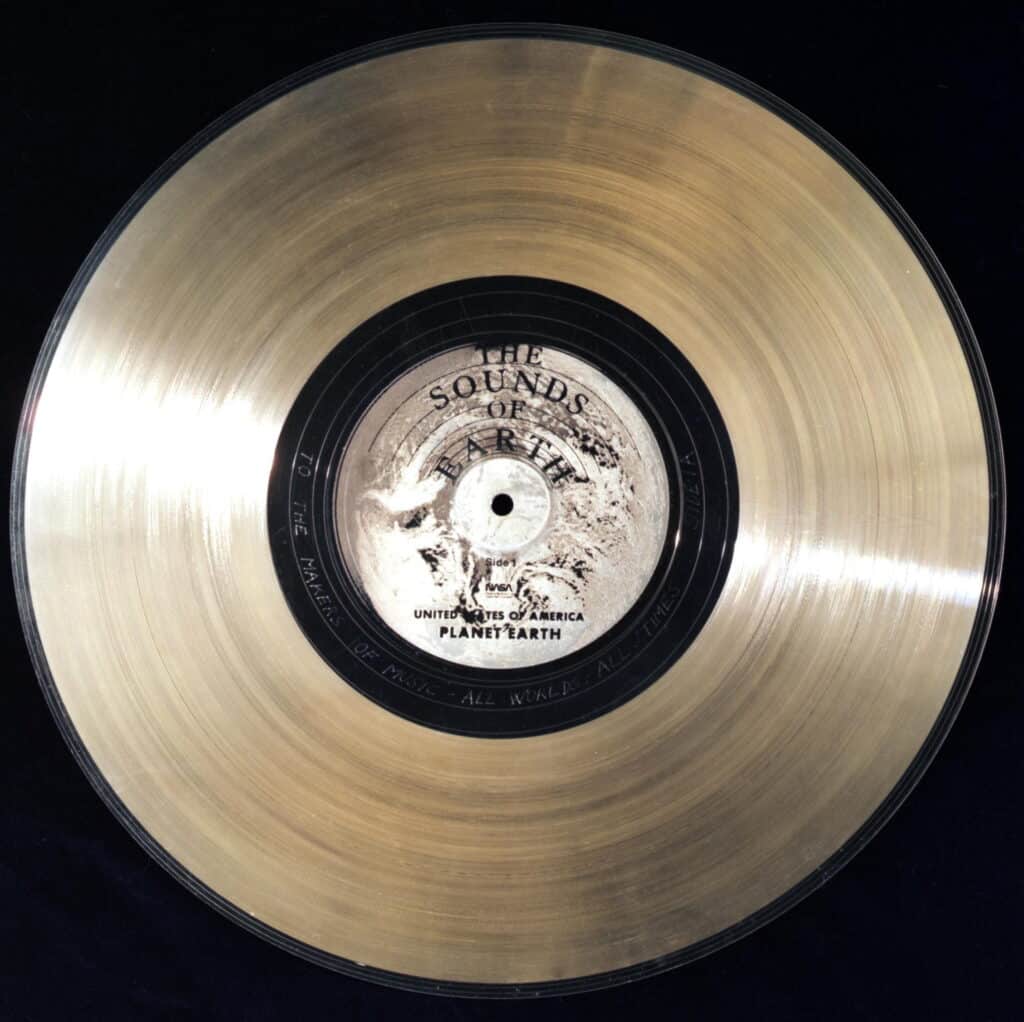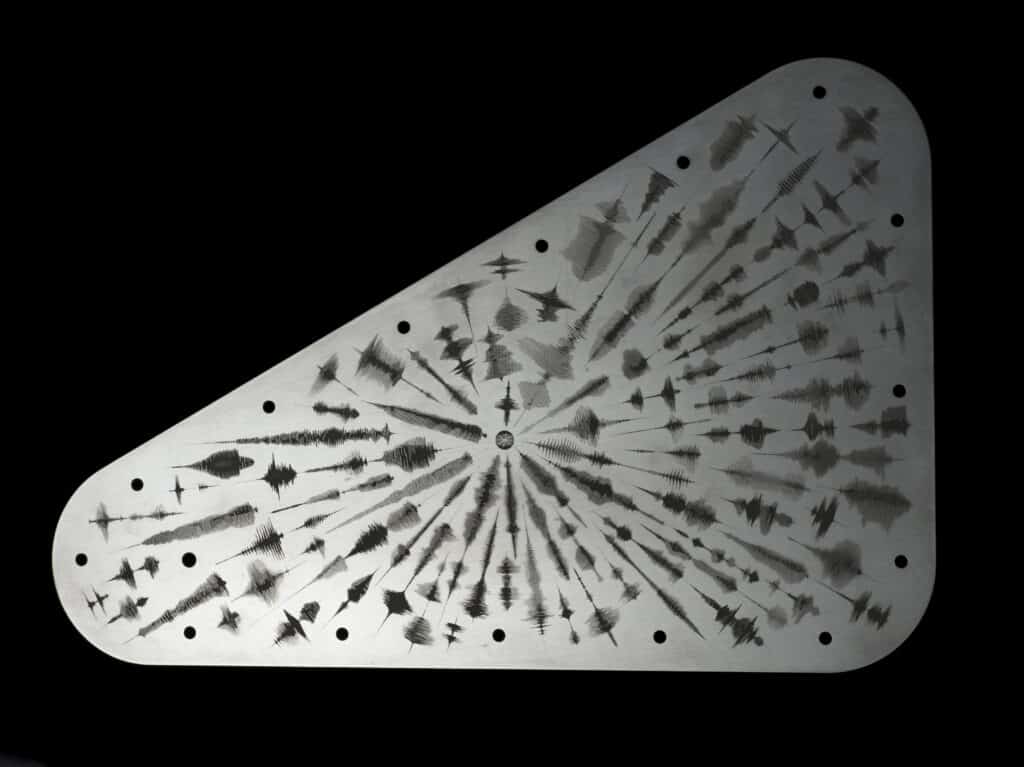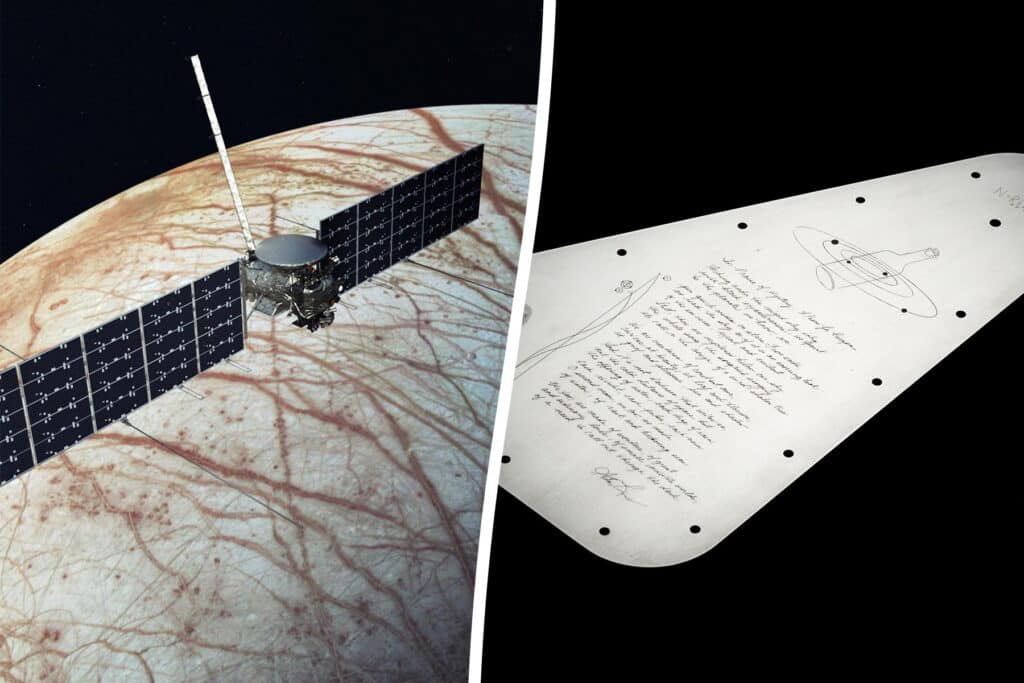Back in 1977, NASA decided to hitch a ride to the stars using a golden record album, a creative shout-out to any extraterrestrial life forms floating around in the vast expanse of space. Fast forward to today, and they’re at it again, but this time with a twist—a “message in a bottle” plaque, all set to catch a ride on the Europa Clipper spacecraft in October 2024, bound for Jupiter’s intriguing moon, Europa.
Picture this: the spacecraft, armed with a message not just for us earthlings but for anyone out there, is carrying a unique plaque. This isn’t just any plaque, though. It’s a silver vault plate on the spacecraft that’s etched with the waveforms for the word “water” in 104 different languages. Why water, you might ask? Well, Europa’s hiding a secret beneath its icy crust—an ocean that’s over twice the size of all of Earth’s oceans combined.
It’s a big deal because water is essential for life as we know it.

NASA isn’t new to sending cosmic postcards. Remember the Voyager Golden Records? Those were the twin records sent out in 1977, packed with the sounds and sights of Earth, hoping to give anyone out there a taste of our diverse life and culture. Then there were the Pioneer plaques in the 1970s, golden greetings featuring the silhouettes of a human male and female, alongside symbols meant to give a cosmic roadmap to Earth.
The Europa Clipper’s message, however, is etched on a tantalum metal plate that’s doing double duty: sealing an opening in the electronics vault and carrying a wealth of symbolic messages. One side of the plate is adorned with U.S. Poet Laureate Ada Limón’s “In Praise of Mystery: A Poem for Europa,” handwritten no less, and a silicon microchip showcasing over 2.6 million names submitted by folks like you and me. These names are nestled within an illustration of a bottle amid the Jovian system, nodding to the “Message in a Bottle” campaign that brought us all along for the journey.

The design also tips its hat to the Drake Equation—Frank Drake’s 1961 attempt to peg down the odds of finding advanced civilizations out there—and nods to the radio frequencies we think might be key for interstellar chitchat. These frequencies align with those emitted by water components in space, affectionately dubbed the “water hole,” and are represented on the plate as radio emission lines.
But that’s not all. The plate also pays homage to Ron Greeley, a pioneer of planetary science whose early work laid the groundwork for the Europa Clipper mission. And then there’s the other side of the plate, showcasing those audio waveforms of “water.”
NASA’s got high hopes for the Europa Clipper, aiming to convey the rich tapestry of life on Earth much like the Voyager spacecraft did. Set to launch from the Kennedy Space Center in Florida, the spacecraft will reach the Jupiter system by 2030, embarking on roughly 50 flybys of Europa. The mission? To suss out whether Europa might just have the right conditions for life, exploring its icy shell, ocean composition, and geology along the way.

“The content and design of Europa Clipper’s vault plate are swimming with meaning. The plate combines the best humanity has to offer across the universe – science, technology, education, art, and math,” says Lori Glaze, director of the Planetary Science Division at NASA Headquarters, in a statement. “The message of connection through water, essential for all forms of life as we know it, perfectly illustrates Earth’s tie to this mysterious ocean world we are setting out to explore.”
Robert Pappalardo, Project Scientist at NASA’s Jet Propulsion Laboratory, echoes this sentiment: “We’ve packed a lot of thought and inspiration into this plate design, as we have into this mission itself. It’s been a decades-long journey, and we can’t wait to see what Europa Clipper shows us at this water world.”
So, will this latest attempt at sending a message into deep space lead us to the age-old question of whether or not there are other civilizations out there? Maybe not, but at least the mere idea that it could will allow us all to continue to dream up all of the exciting possibilities.













Comments